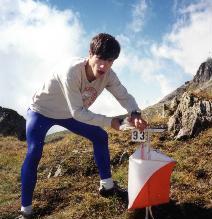Announcing 2020 U.S. WUOC Team
Congratulations to the following who were selected to represent the U.S. in Smolensk, Russia at WUOC2020, July 14-18:
- Diana Aleksieva (QOC) – University of Virginia
- Isabel Bryant (CSU/NEOC) – Wellesley College
- Tyra Christopherson (COC) – Montana State University
- Julia Doubson (BAOC) – Amherst College
- Martin Heir (Fossum IF/Norway) – Norwegian University of Science and Technology
- Michael Laraia (MNOC) – University of Minnesota
- Thomas Laraia (MNOC) – University of Edinburgh
- Anthony Riley (DVOA) – Stanford University
- Danny Riley (alternate) – Cornell University
- Peter Zakrevski (HVO) – Rutgers University

